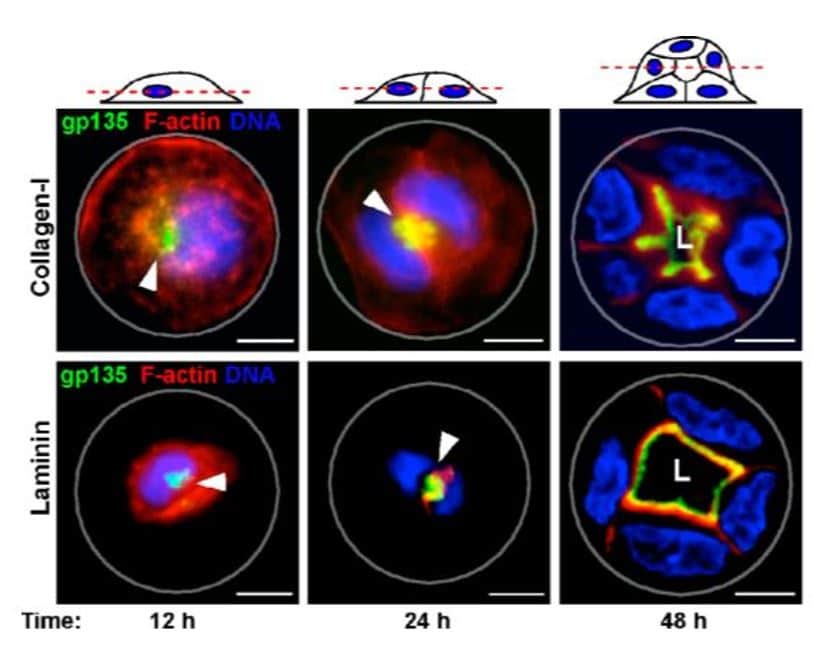Cell polarization
Standardization of the shape and organization of the cell
Standardization of the shape and organization of the cell
Observation of polarity, lumen formation, cytoskeleton organization and organelles distribution
Cells plated on culture dishes lost cell-cell and ECM-cell interaction leading to the loss of their reproducible shape and cytoskeleton organization.
When confined on adhesive micropatterns, cells reproduce spatial constraints encountered in tissues and acquire a standard and reproducible shape. This offers the possibility to study the cytoskeleton architecture and polarity of many cells types by high resolution microscopy.
hTERT-RPE1 cells attached on a triangle micropattern visualized by fibronectin
Actin (red) and vinculin (green) display a rather isotropic and scattered organization of stress fibers. Focal adhesion revealed by vinculin immunolabelling is highly concentrated at cell apices whereas actin fibers are distributed along cell edges [1].

Cell confinement in micropatterned surfaces regulates apicobasal polarity and lumen formation in MDCK cyst
